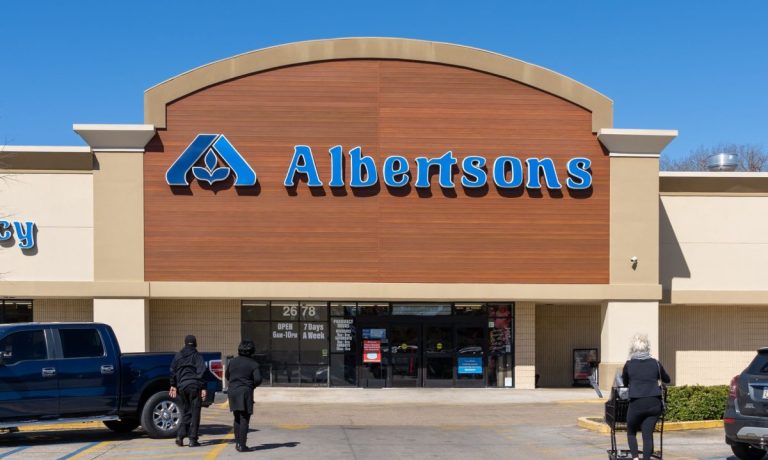
As ongoing financial challenges have grocery shoppers more cautious about their purchasing, many are seeking out digital rewards.
In its fourth quarter and full year fiscal 2023 financial results, Albertsons Companies shared that increases in digital engagement led its growth, with identical sales up only 1% year over year in Q4 but digital sales up 24%. Central to this growth was the chain’s loyalty program, which saw its membership grow by 16% to nearly 40 million.
“We delivered another solid quarter amidst a difficult industry backdrop,” Vivek Sankaran, the grocery giant’s CEO, said in a statement. “Again this quarter, we focused on our strategy to create Customers for Life, which drove strong growth in digital and pharmacy, deepened our omnichannel relationships with our customers and improved our in-store experience.”
He added that this Customers for Life approach involves investments in technology “to digitally connect and further engage our customers through a frictionless omnichannel experience.”
Overall, grocery shoppers demand value. The PYMNTS Intelligence study last year, “Consumer Inflation Sentiment: The False Appeal of Deal-Chasing Consumers,” found that 44% of grocery shoppers are deal chasers, willing to go wherever they will get the best price.
Plus, in the face of ongoing economic challenges, many are cutting back. Supplemental research from PYMNTS Intelligence’s study Consumer Inflation Sentiment: Consumers Cautiously Spend More Amid Lower Inflation, which drew from a survey of nearly 5,000 U.S. consumers, revealed that 86% of grocery customers have made changes to their purchasing behavior in response to price increases. The most common shift is cutting back on nonessential purchases, with 58% of grocery shoppers having done so.
Rewards programs, however, counter the impulse to cut back, incentivizing shoppers with relevant deals to keep them spending. The PYMNTS Intelligence study, “2024 Global Digital Shopping Index: U.S. Edition,” created in collaboration with Visa Acceptance Solutions, which drew from a survey of more than 2,400 United States consumers, found that 54% of grocery shoppers expect digital rewards or loyalty programs. Yet 26% of these consumers are unable to find such programs when they look for them.
In fact, consumers demand rewards for their grocery purchases more than for other kinds of shopping. The study “Leveraging Item-Level Receipt Data: How Personalized Card-Linked Offers Drive Store Card Usage,” a PYMNTS Intelligence and Banyan collaboration, found that consumers are more interested in receiving offers from grocers than any other type of merchant reviewed. In fact, 61% of consumers are interested in receiving offers from such stores, and 44% say this is the category in which they most want card-linked rewards.
This demand for grocery rewards will likely only continue to grow, as ongoing economic challenges put pressure on consumers’ food budgets. The PYMNTS Intelligence report ”New Reality Check: The Paycheck-to-Paycheck Report: Pessimism About Pay Rises Offsets the Effect of Falling Inflation“ found that 83% of consumers said they are at least somewhat concerned about near-term economic conditions.
Looking to the year ahead, Sankaran highlighted “ongoing headwinds” in Monday’s comments, including “cycling significant prior year food inflation” and “lower government assistance for our customers.”